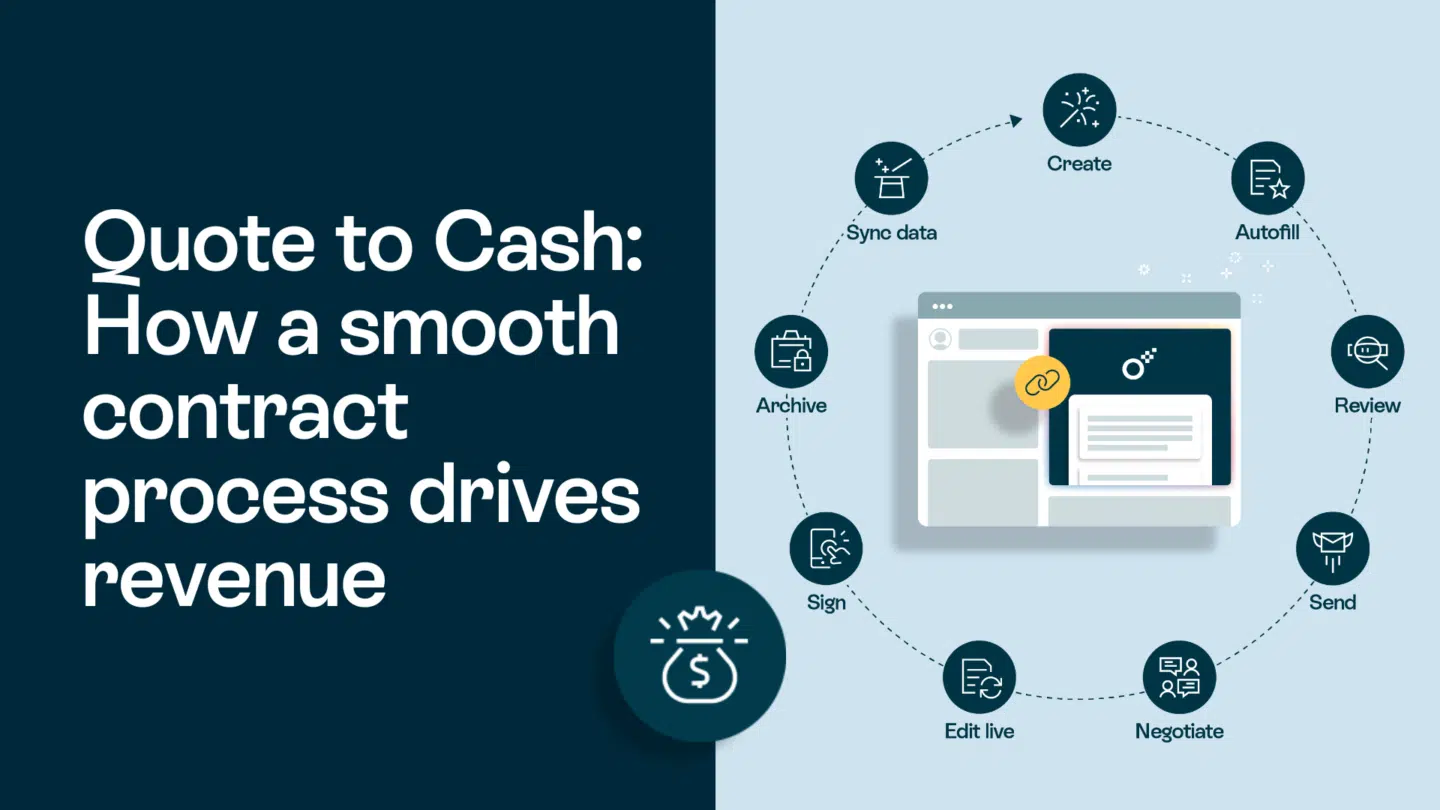Most businesses today rely on a network of specialized systems rather than a single all-in-one solution. The key to success lies in seamless integrations that connect these systems, enhancing efficiency and productivity.
In this article, we’ll uncover powerful integration methods, real-world benefits, and practical use cases—plus, how modern contract management solutions like Oneflow can become a vital part of a well-connected business ecosystem.
Why business system integration is important
Business system integration involves connecting different applications, databases, and systems so they can communicate and exchange data with each other. When systems are properly integrated, a seamless flow of information is created that eliminates data silos and manual data transfer.
Benefits of effective system integration:
Increased Productivity: Automating data transfer between systems saves time and reduces manual work. Employees no longer need to transfer information from one system to another, freeing up time for more value-creating tasks.
Improved Data Quality: When data only needs to be registered once and then flows through all systems, the risk of errors is reduced. This ensures that decision-makers have access to accurate and up-to-date information.
Better Customer Experience: Integrated systems enable a cohesive customer experience across all touchpoints. For example, the customer’s purchase history from the e-commerce platform can be available to the customer support team when the customer calls in.
Faster Decisions: Real-time data from all parts of the organization enables faster and more informed decisions.
Scalability: Well-designed integrations make it easier to add new systems or features without disrupting existing processes.
Competitive Advantages: By being able to quickly respond to market changes and customer requests, companies with well-integrated systems can achieve significant competitive advantages.
Different integration methods and their benefits
There are several methods for integrating business systems, each with specific benefits and use cases.
Point-to-point integration
This is the simplest form of integration, where two systems are connected directly to each other through a specific connection.
Benefits:
- Simple to implement for a small number of systems
- Usually faster performance than more complex integration methods
- Direct communication provides minimal delays, ideal for time-critical processes
- Requires minimal infrastructure and can be implemented quickly
Use Cases: Point-to-point integration is ideal for smaller companies with few systems or for specific, time-critical integrations. It is particularly suitable when two systems need deep integration with minimal latency, such as integration between point-of-sale systems and inventory systems in retail.
Enterprise Service Bus (ESB)
An ESB functions as a central hub through which all messages and data pass. It handles transformations, routing, and protocol conversions.
Benefits:
- Reduces the number of connections compared to point-to-point
- Centralized management of integration logic makes maintenance easier
- Standardized communication between systems regardless of underlying technology
- Better scalability when adding new systems
- Provides a unified view of the entire integration landscape
Use Cases: ESB is ideal for medium to large organizations with multiple disparate systems that need to communicate. Typical use cases include banks that need to integrate multiple legacy systems, healthcare organizations with various specialist systems, or manufacturing industries with different operational systems for different departments.
Read also: What is enterprise contract management?

API-based integration
This method utilizes APIs (Application Programming Interfaces) to enable communication between systems via standardized interfaces.
Benefits:
- Flexibility and reusability in integrations
- Simplifies the development of new connections through standardized interfaces
- Enables easier connection to external services and partners
- Scalable and adaptable for future needs
- Gives development teams autonomy to build and maintain APIs
- Facilitates innovation by making data and functions available for new use cases
Use Cases: API-based integration is ideal for modern companies that want to build a flexible and future-proof IT infrastructure. It’s perfect for businesses that need to integrate cloud services, for organizations that want to offer functionality to external partners, or for companies planning to develop mobile apps and other digital services that need access to central business systems.
iPaaS (Integration Platform as a Service)
iPaaS is a cloud-based platform that offers tools and functions for building, running, and managing integrations between different systems, both in the cloud and on-premises.
Benefits:
- Reduced technical complexity through ready-made integration tools
- Faster implementation compared to traditional integration methods
- Scalable resources based on needs without large initial investments
- Pre-configured connections to popular systems save development time
- Often user-friendly interfaces that enable non-technical users to build integrations
- Continuous updates and improvements from the provider
Use Cases: iPaaS is particularly suitable for organizations that want to minimize their IT infrastructure or that have limited internal integration resources. It’s excellent for companies that need to quickly integrate cloud-based services, for businesses with limited IT staff, or for organizations undergoing rapid digital transformation and needing agile integration methods.
Webhooks and event-driven integration
This method is based on systems reacting to events that occur in other systems through pre-configured webhooks or event listeners.
Benefits:
- Real-time updates based on events provide current information
- Looser coupling between systems makes it easier to replace or update individual components
- Reduced load by only sending data when actually needed
- Scalable for a large number of events without performance loss
- Enables reactive systems that can adapt dynamically to changes
Use Cases: Event-driven integration is excellent for real-time systems where fast data transfer is critical. It’s ideal for e-commerce systems that need to react to orders or inventory changes, notification services that need to send customer messages based on events, or IoT systems where devices generate data that requires immediate processing.
Integration strategies for different business needs
The choice of integration strategy should be guided by the organization’s specific needs. Here are some successful strategies for different types of companies:
For large companies with legacy systems:
Large organizations with many older systems can benefit from a hybrid strategy:
- Use ESB to handle complex transformations between older systems
- Introduce API layers to modernize and open up for new integrations
- Consider iPaaS to quickly introduce new services without disrupting existing infrastructure
Examples of Successful Implementations: A large bank used this hybrid strategy to build new digital services on top of its existing core banking systems, resulting in a 40% increase in digital customer interaction without disrupting critical business processes.
For fast-growing medium-sized companies:
Medium-sized companies with ambitions to grow should focus on scalability:
- Implement an API-first strategy for all new systems
- Consider microservices architecture to enable independent scaling
- Use iPaaS to quickly integrate new tools as needs grow
Examples of Successful Implementations: An e-commerce company that grew 300% in two years used this strategy to quickly integrate new logistics partners, payment solutions, and customer service systems without having to rebuild its fundamental platform.
Read also: 10 best contract management software in 2025
For small businesses with limited resources:
Smaller organizations should prioritize simple and cost-effective solutions:
- Choose cloud-based systems that already have pre-configured integrations
- Utilize iPaaS solutions to avoid the need for specialist expertise
- Focus on key integrations that provide the greatest business benefit
Examples of Successful Implementations: A professional services startup automated its business processes by integrating its CRM system with contract management, invoicing, and project management via an iPaaS solution, reducing administrative time by 65%.

Contract management in integrated systems: Oneflow
In the modern business landscape, contract management is a critical process that can greatly benefit from integrations. Oneflow is a platform specialized in digital contract management that works well in integrated business environments.
How Oneflow can be integrated with business systems:
API Capabilities: Oneflow offers a comprehensive API that makes it possible to seamlessly integrate their contract management functions with various business systems, from CRM to ERP and HR platforms.
Pre-Configured Connections: For popular business systems, Oneflow offers ready-made integrations that can be activated with minimal configuration, saving time and resources.
Support for Event-Driven Architecture: Through webhooks, other systems can immediately react to events in the contract process, such as when contracts are created, sent, or signed, enabling automated workflows.
Benefits of integrating Oneflow:
Streamlined Processes: By integrating contract management with other business systems, organizations can automate the entire process from creation to signing and archiving.
Improved Data Integrity: Contract data can flow seamlessly between systems, reducing the risk of errors and ensuring that all departments work with the same information.
Secure Contract Management: Oneflow prioritizes security in all its integrations, ensuring that sensitive contract documents are handled with appropriate security measures even when moving between systems.
Customer Example: A medium-sized technology company integrated Oneflow with its CRM system and achieved a 75% shorter contract process by eliminating manual steps between sales and contract management. This resulted in faster sales cycles and better customer experience.
Läs även: Oneflow’s integrations: Our types of integrations, and how they work

The future of business system integrations
The integration landscape is evolving rapidly with several exciting trends that will shape the future:
Low-Code/No-Code Integrations: The emergence of tools that allow non-technical users to create integrations will democratize the integration process and reduce dependence on IT departments.
AI-Driven Integration: Artificial intelligence will play an increasingly important role in automating integrations, identifying patterns in data flows, and suggesting optimizations.
Ecosystem Perspective: Successful companies increasingly view their integrations as a business ecosystem rather than separate point-to-point connections, enabling more value-creating partnerships.
Digital Transformation as a Driver: Integration is no longer just a technical issue but a central part of companies’ digital transformation strategies, focusing on creating cohesive customer experiences across all channels.
Read also: Top 17 workflow automation tools in 2025
Integrate business systems: Conclusion
Integration of business systems is no longer a luxury but a necessity for modern organizations. Well-thought-out integrations create a cohesive digital infrastructure that can be crucial for building competitive and efficient operations.
By strategically choosing integration methods based on specific business needs, organizations can achieve significant efficiency gains, improved customer experience, and increased competitiveness. Whether you choose a traditional ESB, modern API-based strategy, or integrate specialized solutions like Oneflow for contract management, the key to success is a clear connection between integration strategy and business goals.
As technology continues to evolve, organizations that build flexible and future-proof integration architectures will have a significant advantage in the digital economy. By strategically approaching system integration, companies can not only increase their operational efficiency today but also lay the foundation for future innovation and growth.
Try Oneflow and experience how easily it integrates with your other systems.








